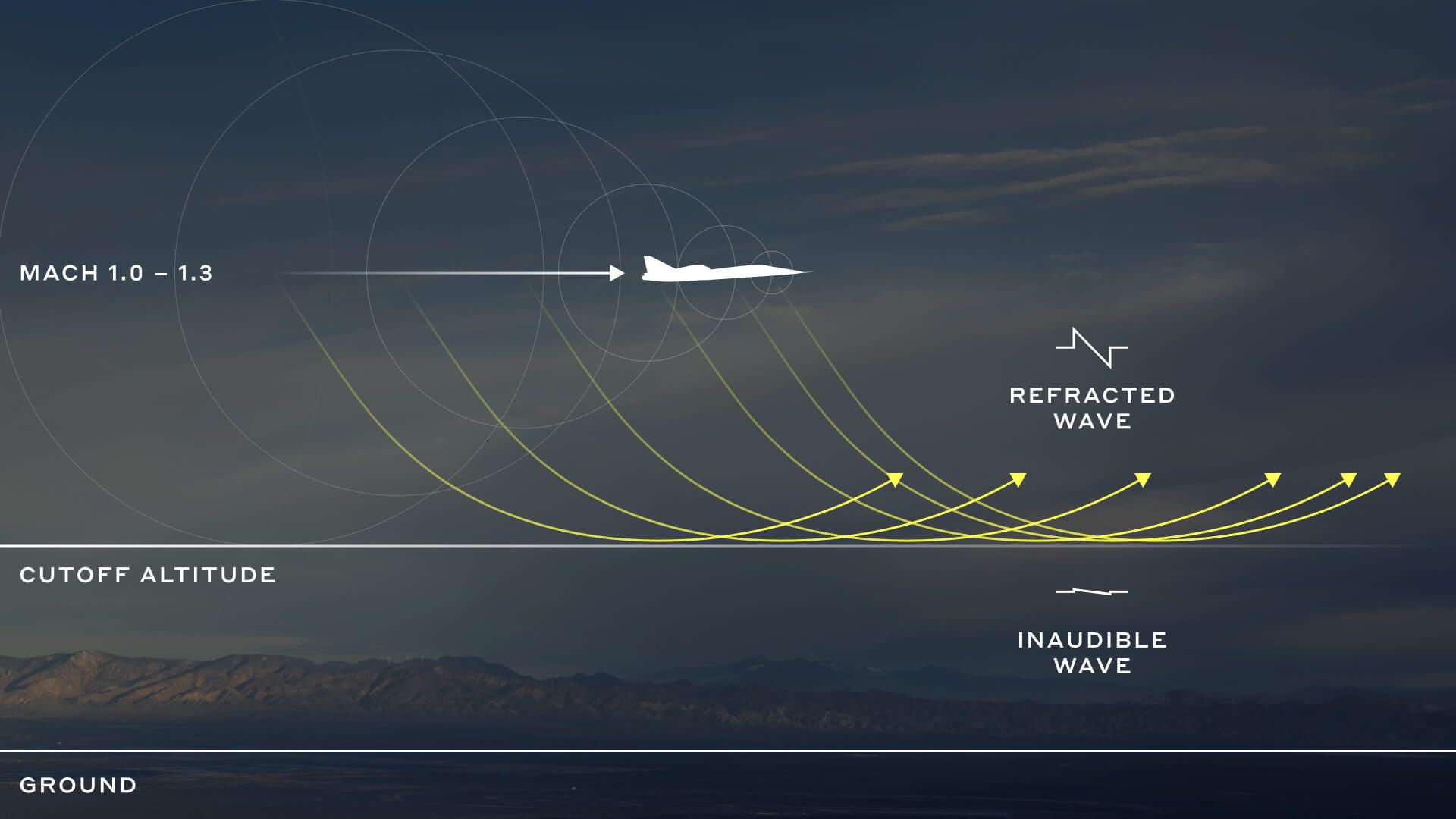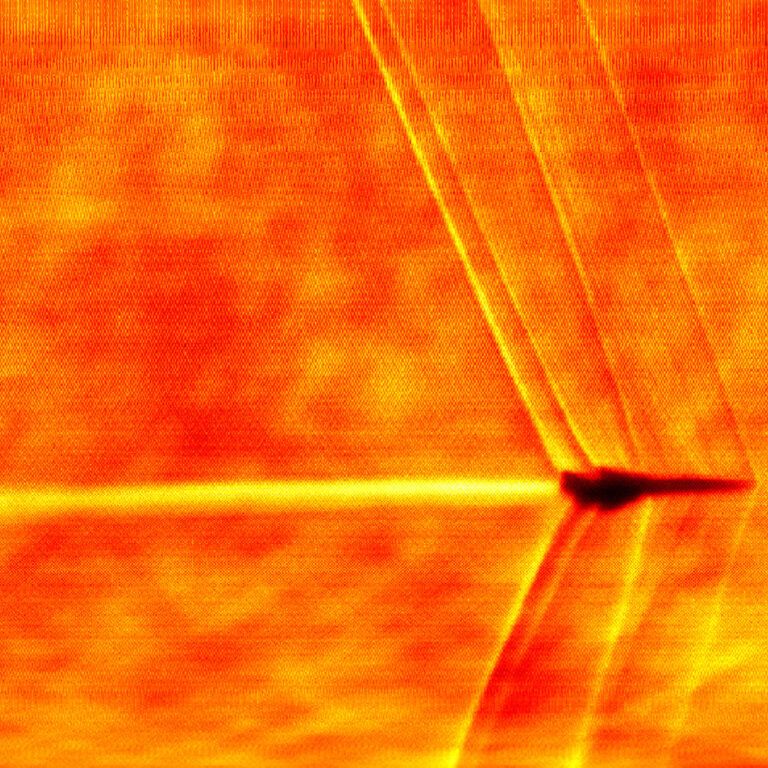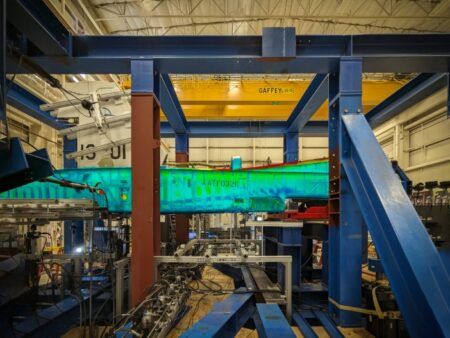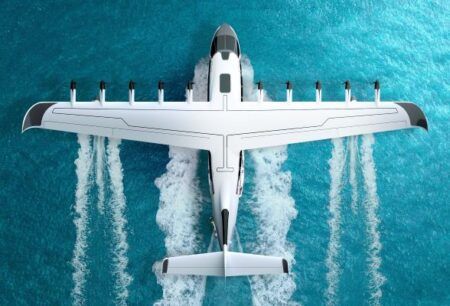Boom Supersonic has released Schlieren imagery of the shock waves created by its XB-1 demonstrator aircraft during test flights last month.
NASA researchers on the ground used Schlieren photography to visualize the shock waves created during XB-1’s second supersonic flight on February 10, 2025. In January, XB-1 became the first independently developed jet to fly faster than the speed of sound, and the first civil supersonic jet built in America.
NASA teams also collected data on XB-1’s acoustic signature at one location on the flight route. Boom’s analysis of the data found that no audible sonic boom reached the ground as the jet flew at supersonic speeds.
“This image makes the invisible visible—the first American-made civil supersonic jet breaking the sound barrier,” said Blake Scholl, founder and CEO of Boom Supersonic. “We also confirmed that XB-1 made no audible sonic boom, which paves the way for coast-to-coast flights up to 50% faster.”
Taking Schlieren images requires ideal conditions and timing, and exceptional flying by the pilot. Boom Chief Test Pilot Tristan “Geppetto” Brandenburg positioned XB-1 at an exact time in a precise location over the Mojave Desert to enable NASA to photograph XB-1 flying in front of the sun, documenting the changing air density around the aircraft at speeds exceeding Mach 1.
Using waypoints computed by NASA, the XB-1 team rapidly developed avionics software to guide the pilot to the specific points in space that XB-1 would have to fly through in order to eclipse the sun. To capture the imagery, NASA used ground telescopes with special filters that detect air distortions, such as shock waves, around the supersonic aircraft.
Efforts conducted by both NASA and Boom while modeling the expected flight parameters of XB-1’s supersonic flights estimated a very high likelihood of operating at Mach cutoff, in which a sonic boom refracts in the atmosphere and never reaches the ground. This effect is achieved by breaking the sound barrier at a high enough altitude, with exact speeds varying based on atmospheric conditions.

Sonic boom data was captured with microphones and sound pressure level recording devices positioned in limited strategic locations in relation to the flight path. Boom’s assessment of this type of data from XB-1’s supersonic flights demonstrates that supersonic flight without the disturbance of a sonic boom is possible. This aligns with research previously conducted by NASA in efforts to bring supersonic commercial travel to the public.
Boom plans to use data collected from XB-1’s test flight program to bring what it is terming “boomless cruise” to the supersonic airliner it is developing, Overture.
The Mach 1.7-capable Overture airliner will carry up to 80 passengers with a range of 4,900 miles (7,885km). The aircraft will be powered by three non-afterburning, medium-bypass turbofan engines, two under the wings and one in the tail.
The company has 130 orders and pre-orders from United Airlines, American Airlines, and Japan Airlines for Overture. In 2024, Boom completed construction on the Overture Superfactory in Greensboro, North Carolina, which will scale to produce 66 Overture aircraft per year.





